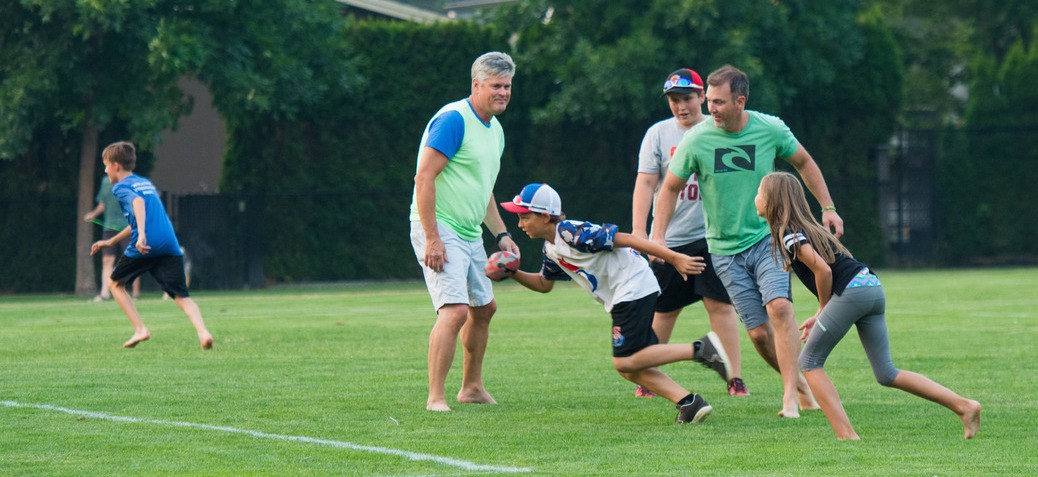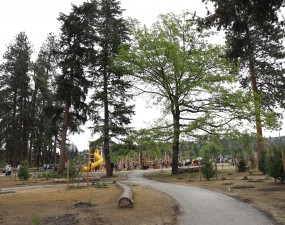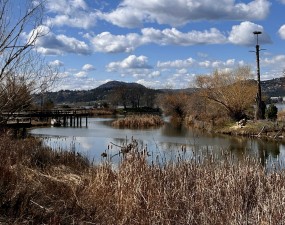Managing parks in one of Canada's driest regions
Topics
By David Creighton | Aug 16, 2022
For those who like to play and lounge outdoors, there’s no better place to be than Kelowna. From sports fields to parks, and from hiking trails to the lake, our City is rich in outdoor and natural amenities to keep weekend warriors busy all year round.
But keeping these amenities healthy and safe for public use is no small task. While our long, hot summers certainly make for plenty of outdoor fun, they can also put a strain on our local water resources. As many residents know all too well, as temperatures climb, so too does the risk of drought, fire, and other disruptive hazards. Add climate change and a booming population to the mix and maintaining public spaces like parks and sports fields becomes a balancing act, to say the least.
As the City of Kelowna’s Sports Field and Irrigation Supervisor, I oversee a team of specially trained irrigation specialists and field maintenance workers. Together, we work to ensure that locals and visitors alike can continue to enjoy healthy outdoor amenities (even during the hot, dry summer months) while still doing everything we can to conserve water and protect our beautiful valley.
This might all sound a bit dramatic. It’s just like watering a lawn, isn’t it? Not quite: because they’re used so much more intensively than conventional private lawns, shared public spaces like sports fields have very specific irrigation needs. Our city fields, for instance, need to be maintained such that they can handle between 500 and 900 hours of rental use per year. Without proper watering, the top layer of soil can become extremely dry, hard and rocky. This not only increases the risk of injury for sports teams and other users, but can also lead to costly repairs down the road.
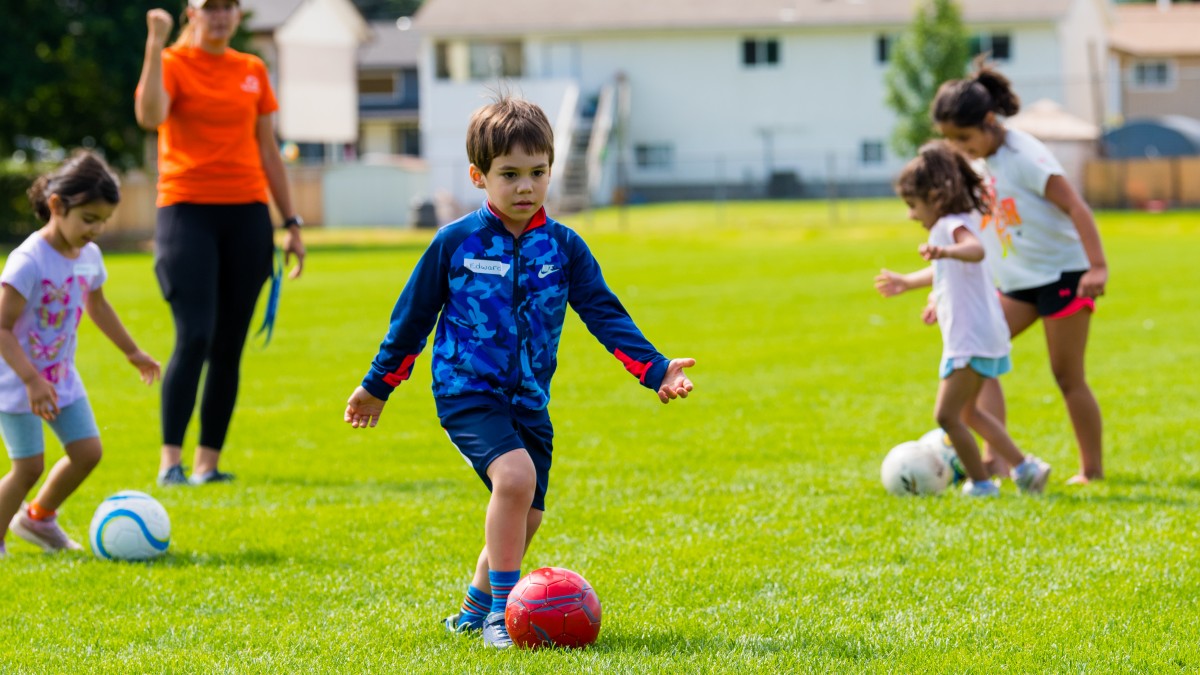
City sports fields see between 500 and 900 hours of rental use per year. Keeping them healthy and safe takes careful management.
So how do we avoid these problems while also keeping our water consumption to a minimum? The work starts with having the right knowledge and expertise on your side. That’s why Kelowna’s Parks Department maintains an Irrigation Efficiency Program that includes ongoing training, regular site assessments, and the use of centralized control systems that monitor our water consumption across more than 350 local irrigation systems and notify us of breaks, leaks and other issues.
Next, we pair this ongoing training and data collection with irrigation and cultivation techniques specifically designed to maximize water efficiency. Many of these techniques will ring familiar, since they’re the same ones we recommend that homeowners adopt when managing their own lawns. These include aerating, topdressing, fertilizing and overseeding. Also, much like local homeowners, we irrigate most of our passive green spaces (like parks) a maximum of three times per week under normal conditions. And all regularly scheduled watering on City fields and green spaces happens at night to ensure maximum infiltration and minimal loss to evaporation.
Occasionally, sports fields require some additional daytime waterings. These occasional waterings are called ‘syringes,’ and use a small amount of water to keep the top layer of soil from hardening. Especially as climate change brings hotter, drier summers, these strategies play a key role in striking a delicate balance between conservation and quality public use.
One of the biggest challenges we face in the course of our work is helping the public understand why we do what we do. Many wonder, for example, if water is in such short supply in the Okanagan, why do we bother irrigating sports fields and parks at all during the summer? There is more than one answer to that question. On the one hand, it is a practical matter. As I mentioned above, leaving fields and greenspaces to dry out during the summer months would not only compromise their safety, but incur significant repair costs down the road. Proactive maintenance practices that prioritize conservation, resilience and sustainability are the best way to minimize these risks.
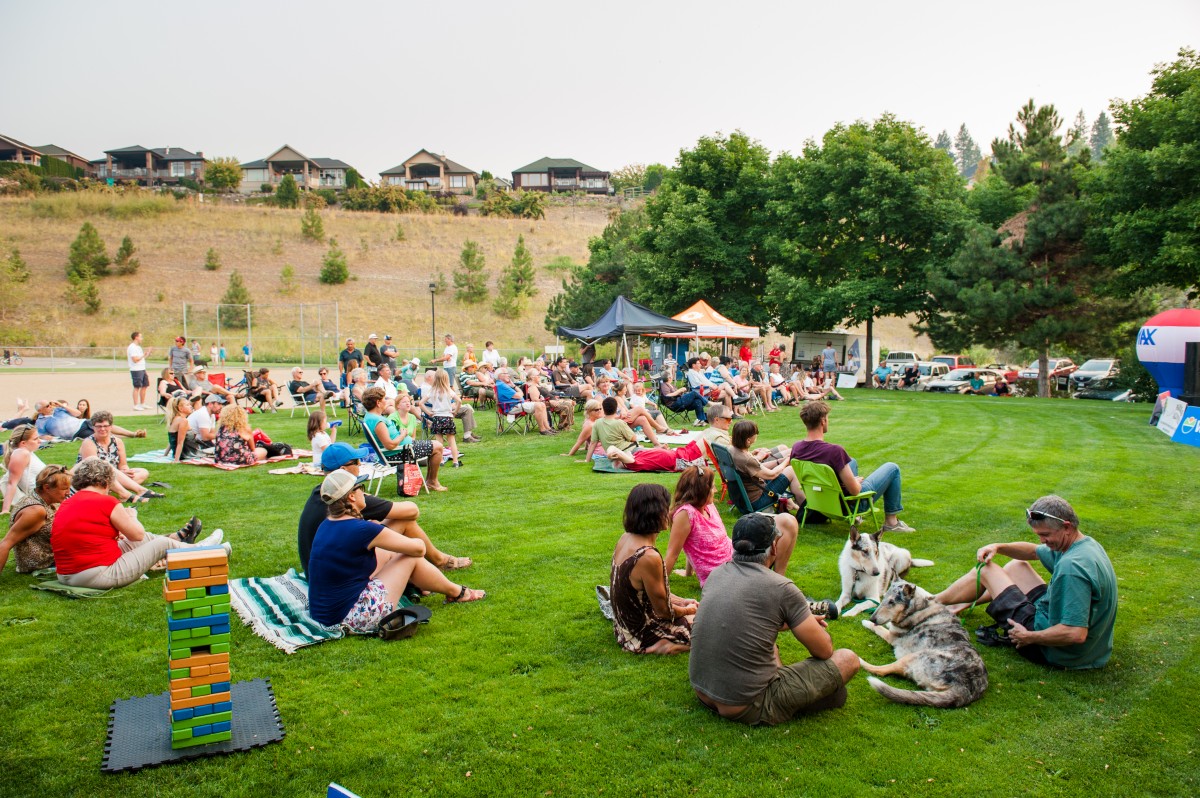
Because they are shared among so many residents, public greenspaces perform well in terms of per capita water consumption, especially when compared with private lawns
On the other hand, maintaining our parks, greenspaces and sports fields is a question of community value. Aside from being beautiful places to play and relax, these spaces deliver a wide range of community benefits, playing a key role in carbon capture, stormwater management, noise reduction, heat mitigation and the management of air pollution. They even give a boost to the local economy by attracting tourists and sporting events from across the country. In addition, public greenspaces function as yards for the growing number of city residents without private yards of their own. And because these spaces are shared among many residents, they perform much better than private lawns when it comes to per capita water consumption.
Simply put, in a place like Kelowna, where a fast-growing population meets an exceptionally dry climate, well managed shared greenspaces deliver excellent bang for our collective buck and make efficient use of our most precious resource.
David Creighton is the City of Kelowna's sportsfield and irrigation supervisor. With his team, David works to ensure that city parks, sports fields and other greenspaces are safe and healthy for rental and community use. David is passionate about parks and all the benefits they bring to our communities. In his work for the City, conservation, sustainability and resiliency are top of mind.


